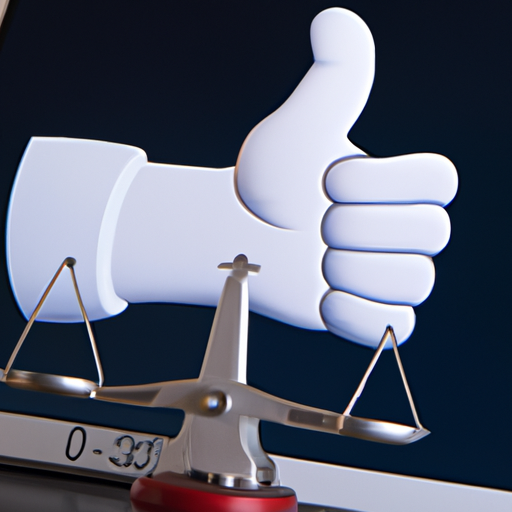This page is about Business Law.
Are you looking for guidance on how to navigate the complexities of compliance and stay on the right side of the law? Look no further! In this article, we will provide you with comprehensive and exhaustive information about the importance of compliance and how it impacts your business. Whether you are a small business owner or a corporate executive, understanding the legal implications of non-compliance is crucial. We will address common legal concerns directly, providing reassurance and guidance to help you avoid legal pitfalls. So, if you find yourself in need of expert advice and assistance, don’t hesitate to reach out to attorney Jeremy Eveland. Give us a call today and take the next step towards ensuring your compliance and legal peace of mind.
Why Compliance Matters
The Importance of Compliance
Compliance refers to the act of adhering to laws, regulations, and industry standards that are applicable to your business. It is a crucial aspect of running a successful and ethical organization. Compliance ensures that you operate within the boundaries of the law, maintain a good reputation, and protect the interests of your stakeholders, including employees, customers, and shareholders.
Compliance is not only about following rules; it is about fostering a culture of integrity and accountability within your organization. By prioritizing compliance, you demonstrate your commitment to ethical behavior, which can enhance trust and confidence among your clients, partners, and the general public.
Consequences of Non-Compliance
The consequences of non-compliance can be severe and far-reaching. Violating laws and regulations can lead to legal actions, fines, penalties, and even criminal charges. In addition to the financial costs, non-compliance can damage your reputation, erode customer trust, and result in the loss of business opportunities.
Furthermore, non-compliance can have a detrimental impact on the well-being of your employees and the overall functioning of your organization. It can expose your business to various potential risks, including lawsuits, breaches of data security, and operational disruptions. Therefore, understanding and prioritizing compliance is essential to mitigate these risks and protect your organization.
Understanding Laws and Regulations
Types of Laws and Regulations
Laws and regulations relevant to compliance can vary depending on the nature of your business and the industry in which you operate. Examples of common laws and regulations include labor laws, environmental regulations, consumer protection laws, and data protection regulations. It is important to be aware of the specific laws and regulations that apply to your industry to ensure compliance.
Labor laws govern various aspects of the employer-employee relationship, such as minimum wage requirements, working hours, and workplace safety. Environmental regulations aim to safeguard the environment by setting standards for pollution control, waste management, and sustainable practices. Consumer protection laws protect individuals from unfair business practices and ensure the safety and quality of products and services. Data protection regulations, such as the General Data Protection Regulation (GDPR), regulate the collection, storage, and use of personal data.
Understanding Your Obligations
To ensure compliance, it is essential to understand your specific obligations under relevant laws and regulations. This involves conducting a comprehensive review and analysis of the legal framework that applies to your organization. You may need to consult legal experts or seek guidance from regulatory agencies to fully understand your obligations.
By understanding your obligations, you can develop robust compliance strategies and establish processes and controls to meet legal requirements. Regularly reviewing and updating your knowledge of laws and regulations is crucial, as they may change over time, requiring adjustments to your compliance program.
Developing a Compliance Program
The Benefits of a Compliance Program
Implementing a compliance program is an effective way to manage and mitigate compliance risks. It provides a structured approach to ensure that your organization operates within legal boundaries and meets industry standards. A well-designed compliance program offers several benefits:
- Risk mitigation: A compliance program helps identify and address potential compliance risks, minimizing the likelihood of legal issues and penalties.
- Improved operational efficiency: By streamlining processes, policies, and procedures, a compliance program can enhance the efficiency and effectiveness of your business operations.
- Enhanced reputation: Demonstrating a commitment to compliance can enhance your reputation among clients, partners, and the public, establishing trust and credibility.
- Competitive advantage: Compliance can be a differentiating factor, especially in industries where ethical practices and responsible behaviors are highly valued.
- Employee satisfaction and retention: A compliance program fosters a culture of integrity and accountability, leading to higher employee satisfaction and retention rates.
Key Components of a Compliance Program
A comprehensive compliance program typically includes the following key components:
- Written policies and procedures: Clearly documented policies and procedures outline the expectations and requirements for compliance. These should cover a wide range of areas, including ethics, conflicts of interest, data protection, and financial reporting.
- Training and education: Ensuring that employees understand their compliance obligations is crucial. Regular training programs and educational initiatives can help employees stay up-to-date with the latest regulations and best practices.
- Monitoring and auditing: Regular monitoring and auditing of compliance activities help identify any deviations or gaps. This allows for prompt corrective actions to be taken to address non-compliance issues.
- Reporting mechanisms: Establishing channels for reporting potential compliance violations or concerns, such as whistleblower hotlines or anonymous reporting systems, encourages employees to come forward without fear of retaliation.
- Enforcement and disciplinary actions: Clearly defined consequences for non-compliance, including disciplinary actions and penalties, deter potential violations and reinforce the importance of compliance.
By implementing these components effectively, your organization can establish a strong compliance program that promotes ethical conduct and mitigates compliance risks.
Implementing Compliance Measures
Creating Policies and Procedures
Creating clear and comprehensive policies and procedures is a crucial step in implementing effective compliance measures. These policies and procedures should outline the expectations, requirements, and standards for compliance in different areas of your organization.
When developing policies and procedures, it is important to consider the specific laws and regulations that apply to your industry. Tailor them to address the unique compliance risks and challenges that your organization may face, such as data security, anti-corruption, or workplace safety.
Ensure that your policies and procedures are easily accessible to all employees and regularly communicated and updated as needed. It is essential to foster a culture where employees understand the importance of compliance and feel empowered to adhere to the established guidelines.
Training and Education
Investing in training and education is crucial for promoting compliance awareness and ensuring that employees understand their obligations. Training programs should cover a wide range of topics, including relevant laws and regulations, company policies, ethical conduct, and best practices.
Training sessions can be conducted through various methods, such as workshops, online modules, or seminars. It is important to assess the effectiveness of the training programs regularly and make adjustments based on feedback and emerging compliance trends.
Remember to provide ongoing education and refresher courses to keep employees informed about any changes in laws or regulations that may impact their compliance responsibilities. By investing in training and education, you empower your employees to make informed compliance decisions and contribute to a culture of compliance.
Monitoring and Auditing
Regular monitoring and auditing play a crucial role in ensuring ongoing compliance. These activities help identify any deviations or gaps in compliance and provide an opportunity for timely corrective actions to be taken.
Monitoring can involve regular reviews of documentation, transactional data, and internal controls to detect any potential compliance issues. Audits, on the other hand, involve more comprehensive and systematic reviews of the organization’s compliance program, policies, and procedures.
Both monitoring and auditing should be conducted by individuals or teams who are independent and have the necessary expertise in compliance. They should have direct access to relevant information and resources to effectively carry out their duties. The findings from monitoring and audits should be documented and reported to relevant stakeholders, including senior management and the board of directors, to ensure transparency and accountability.
By regularly monitoring and auditing your organization’s compliance efforts, you can proactively identify and address any areas of non-compliance, minimizing risks and ensuring ongoing adherence to regulations and industry standards.
Compliance in Specific Industries
Compliance in Healthcare
Compliance in the healthcare industry is of utmost importance due to the significant impact it has on patient safety and well-being. Healthcare providers, including hospitals, clinics, and medical professionals, must comply with a wide range of laws and regulations to ensure quality care and protect patient information.
Key areas of compliance in healthcare include:
- HIPAA (Health Insurance Portability and Accountability Act): This federal law governs the privacy and security of protected health information (PHI). It sets standards for the handling, use, and disclosure of PHI by healthcare providers, health plans, and healthcare clearinghouses.
- Medicare and Medicaid regulations: Healthcare providers that participate in Medicare or Medicaid programs must comply with specific regulations to ensure program integrity, accurate billing, and quality care.
- Anti-kickback and fraud laws: To prevent unethical practices, healthcare providers must ensure compliance with laws that prohibit the payment or receipt of kickbacks, false claims, and fraudulent billing practices.
- Quality and safety standards: Compliance in healthcare also involves meeting quality and safety standards set by regulatory agencies, such as the Centers for Medicare and Medicaid Services (CMS) and the Joint Commission.
- Electronic health record (EHR) compliance: As healthcare moves towards digitalization, compliance with EHR standards and regulations is essential to safeguard patient information and ensure interoperability.
Compliance in healthcare requires robust policies, rigorous training, strict documentation, and regular audits to ensure adherence to laws and regulations. It is essential for healthcare organizations to establish a culture of compliance to protect patients, maintain the trust of the public, and avoid legal and financial consequences.
Compliance in Financial Services
The financial services industry is heavily regulated to protect consumers, ensure market stability, and prevent financial crimes. Compliance in this industry involves adhering to numerous laws and regulations, both at the national and international levels.
Key areas of compliance in financial services include:
- Anti-Money Laundering (AML) regulations: Financial institutions must have robust AML programs in place to prevent money laundering, terrorist financing, and other illicit financial activities. Compliance with AML regulations requires thorough Customer Due Diligence (CDD), Know Your Customer (KYC) procedures, and regular monitoring and reporting of suspicious transactions.
- Securities regulations: Financial institutions, including investment firms and broker-dealers, must comply with securities regulations to ensure fair and transparent markets. Compliance includes filing periodic reports, disclosing information to investors, and preventing insider trading and market manipulation.
- Consumer protection laws: Financial institutions that provide banking, lending, or insurance services must comply with laws that protect consumers from unfair and deceptive practices. Compliance includes clear and accurate disclosure of terms and conditions, handling of consumer complaints, and safeguarding customer information.
- Data protection and privacy regulations: With the increasing reliance on technology, financial institutions must comply with data protection and privacy laws to safeguard customer information. This includes consent management, data breach notification, and secure storage and transmission of sensitive data.
- Anti-Corruption laws: Compliance in financial services requires adhering to anti-corruption laws, such as the Foreign Corrupt Practices Act (FCPA) and UK Bribery Act. Financial institutions must have robust internal controls, due diligence processes, and training to prevent bribery and corruption.
Compliance in the financial services industry is complex and requires continuous monitoring of regulatory changes and industry best practices. Financial institutions must establish comprehensive compliance programs that incorporate policies, training, monitoring, and strict enforcement to ensure adherence to the laws and regulations applicable to their operations.
Compliance in Manufacturing
The manufacturing industry operates in a dynamic regulatory environment, with laws and regulations aimed at protecting consumer safety, product quality, and environmental sustainability. Compliance in manufacturing involves meeting legal requirements, such as safety standards, quality control measures, and environmental regulations.
Key areas of compliance in manufacturing include:
- Occupational Safety and Health Administration (OSHA) regulations: Compliance with OSHA regulations ensures a safe working environment for employees. Manufacturers must establish safety programs, conduct regular inspections, and provide appropriate training to prevent workplace accidents and injuries.
- Product safety standards: Compliance in manufacturing includes adherence to product safety standards set by regulatory agencies, industry associations, and consumer protection organizations. Compliance ensures that products meet quality and safety requirements, reducing the risk of harm to consumers.
- Environmental regulations: Manufacturers must comply with a range of environmental regulations aimed at minimizing pollution, conserving resources, and promoting sustainable practices. Compliance includes waste management, emissions control, and adherence to regulations such as the Clean Air Act and the Resource Conservation and Recovery Act (RCRA).
- Quality management systems: Compliance in manufacturing involves implementing quality management systems, such as ISO 9001, to ensure consistent product quality and customer satisfaction. Compliance includes monitoring production processes, conducting inspections, and maintaining proper documentation.
- Supply chain compliance: Manufacturers must ensure compliance throughout their supply chains, including supplier selection, auditing, and monitoring. Compliance includes adherence to ethical and environmental standards, labor laws, and social responsibility practices.
Compliance in manufacturing requires a proactive approach to identify and address potential risks and ensure ongoing adherence to laws and regulations. Manufacturers must establish effective compliance programs that integrate safety protocols, quality control measures, environmental management, and supply chain due diligence.
Ensuring Data Security and Privacy
The Importance of Data Security
In today’s digital age, ensuring data security is essential to protect sensitive information, maintain customer trust, and comply with data protection regulations. Data breaches can have severe consequences, including financial losses, reputational damage, and legal repercussions.
Data security encompasses various measures to protect data from unauthorized access, loss, or alteration. It includes implementing robust IT infrastructure, encrypting sensitive information, using firewalls and antivirus software, and establishing access controls.
By prioritizing data security, organizations can safeguard confidential information, such as customer records, financial data, and proprietary information. This not only protects the organization but also enhances trust among customers, partners, and stakeholders.
Complying with Privacy Laws
Complying with privacy laws is crucial to respect individuals’ rights and protect their personal information. Privacy laws, such as the GDPR and the California Consumer Privacy Act (CCPA), set standards for the collection, use, and storage of personal data.
Privacy compliance involves obtaining informed consent, providing individuals with control over their data, and ensuring transparency in data handling practices. Organizations must also implement robust data protection measures, such as data encryption, secure storage, and regular audits.
Non-compliance with privacy laws can result in significant penalties and damage to the organization’s reputation. By proactively complying with privacy regulations, organizations demonstrate their commitment to protecting individuals’ privacy rights and avoid legal and financial consequences.
Protecting Sensitive Information
protecting sensitive information goes beyond compliance with privacy laws. It involves implementing comprehensive data protection measures to safeguard confidential information from unauthorized access or disclosure.
To protect sensitive information, organizations should:
- Identify and classify sensitive data: Understand what types of data are considered sensitive or confidential and categorize them accordingly.
- Implement access controls: Limit access to sensitive information to authorized personnel only. This includes enforcing strong password policies, authentication mechanisms, and role-based access controls.
- Encrypt data: Encryption helps protect information in transit and at rest by transforming it into unreadable form. Implement encryption measures for sensitive data stored on devices, servers, or cloud platforms.
- Establish data retention policies: Determine how long sensitive information needs to be retained and establish clear guidelines for secure deletion or destruction when no longer needed.
- Regularly update security measures: Stay up-to-date with the latest security technologies and best practices to address emerging cyber threats and vulnerabilities.
Protecting sensitive information requires a multi-layered approach, involving technical, physical, and administrative controls. By safeguarding sensitive data, organizations can prevent data breaches, protect customer trust, and avoid legal and financial repercussions.
Dealing with Government Investigations
Responding to Investigations
In the event of a government investigation, it is crucial to respond promptly and appropriately to protect your organization’s interests. Government investigations can arise from allegations of non-compliance, fraud, or other legal violations.
When faced with a government investigation, consider the following steps:
- Assemble a response team: Engage legal counsel and relevant internal stakeholders to coordinate the organization’s response. Legal counsel can provide guidance on legal rights, obligations, and strategies to navigate the investigation.
- Preserve relevant documents and data: Ensure that all potentially relevant documents, electronic communications, and data are preserved. Implement a litigation hold to prevent the destruction or alteration of evidence.
- Cooperate with authorities: Cooperate fully with the investigating authorities while ensuring the protection of legal rights. Provide requested information and documents as required, while following legal counsel’s guidance to protect privileged or confidential information.
- Maintain open lines of communication: Establish effective lines of communication with the investigating authorities to stay informed about the investigation’s progress and seek clarification on any requests or issues that arise.
- Internal investigation: Conduct an internal investigation parallel to the government investigation to assess potential compliance issues and identify areas for remediation. This can help demonstrate a commitment to addressing any non-compliance concerns.
- Legal strategy: Work closely with legal counsel to develop an effective legal strategy to navigate the investigation, protect the organization’s interests, and mitigate potential legal and financial consequences.
Responding to a government investigation requires close collaboration with legal counsel, transparency, and a proactive approach to address any compliance concerns. By responding appropriately, organizations can minimize legal and reputational risks and ensure a fair and efficient resolution.
Cooperating with Authorities
Cooperation with investigating authorities is crucial to demonstrate a commitment to compliance and resolve any potential legal issues. Cooperating with authorities involves providing requested information, responding to inquiries, and facilitating the investigation process.
To ensure effective cooperation:
- Appoint a designated point of contact: Designate an individual or team responsible for liaising with the investigating authorities. This ensures clear communication and proper coordination of the organization’s response.
- Document requests and communications: Maintain accurate records of all requests, communications, and interactions with the investigating authorities. This helps ensure transparency and facilitates the organization’s ability to address any concerns or challenges that may arise.
- Seek legal counsel’s guidance: Work closely with legal counsel to understand the organization’s legal rights, obligations, and potential risks associated with cooperation. Legal counsel can help navigate the complexities of the investigation and provide guidance on the scope of cooperation.
- Balance cooperation with legal protections: While it is important to cooperate fully, organizations should protect their legal rights and privileges. Legal counsel can guide the organization in striking the right balance between cooperation and preserving confidential or privileged information.
Cooperating with authorities demonstrates a commitment to compliance, transparency, and accountability. By working collaboratively, organizations can expedite the investigation process and potentially mitigate legal and financial consequences.
Seeking Legal Counsel
When dealing with compliance issues, government investigations, or complex legal matters, seeking legal counsel is essential to protect your organization’s interests and ensure proper legal guidance. The expertise and experience of an attorney can help navigate the complexities of the legal landscape and develop effective strategies to address compliance concerns.
Reasons to consult with an attorney include:
- Legal advice and guidance: Attorneys provide legal advice tailored to your specific situation, helping you understand your rights, obligations, and potential risks. They can guide you through complex laws and regulations and help you make informed decisions.
- Representation in legal proceedings: Attorneys can represent your organization in legal proceedings, such as government investigations, administrative hearings, or civil litigation. They have the expertise to develop strong legal strategies, negotiate settlements, and protect your interests in court.
- Compliance program development: Attorneys can assist in developing and implementing effective compliance programs tailored to your organization. They understand industry-specific regulations and can help you establish policies, procedures, and controls to comply with legal requirements.
- Contract review and drafting: Attorneys can review and draft contracts, ensuring that they effectively protect your interests and comply with applicable laws. They can identify potential risks and negotiate favorable terms.
- Legal dispute resolution: Attorneys can help resolve legal disputes through negotiation, mediation, or litigation. They can advocate for your organization’s interests and work towards a favorable resolution.
Seeking legal counsel provides reassurance, guidance, and protection when facing compliance challenges, government investigations, or other legal matters. Attorneys bring expertise, professional judgment, and a deep understanding of the law to help you navigate complex legal situations and protect your organization’s interests.
Frequently Asked Questions
Q: What are the consequences of non-compliance?
Non-compliance can lead to severe consequences, including legal actions, fines, penalties, reputational damage, and the loss of business opportunities. It can also result in operational disruptions, breaches of data security, and employee well-being concerns.
Q: How can a compliance program benefit my organization?
A compliance program offers several benefits, including risk mitigation, improved operational efficiency, enhanced reputation, competitive advantage, and increased employee satisfaction and retention. It demonstrates your commitment to ethical behavior and ensures that you operate within legal boundaries.
Q: What are some key components of a compliance program?
A comprehensive compliance program includes written policies and procedures, training and education, monitoring and auditing, reporting mechanisms, and enforcement and disciplinary actions. These components work together to establish a culture of compliance and mitigate compliance risks.
Q: What are some key areas of compliance in the healthcare industry?
In the healthcare industry, key areas of compliance include HIPAA regulations, Medicare and Medicaid regulations, anti-kickback and fraud laws, quality and safety standards, and compliance with electronic health record standards. Compliance in healthcare is essential to protect patient safety and confidentiality.
Q: How can organizations protect sensitive information?
Protecting sensitive information involves implementing measures such as data encryption, access controls, data retention policies, and regularly updating security measures. These measures help prevent unauthorized access or disclosure of sensitive information and mitigate the risk of data breaches.
If you need an attorney in Utah, you can call for free consultation:
Jeremy Eveland
8833 South Redwood Road
West Jordan, Utah 84088
(801) 613-1472
https://jeremyeveland.com




































